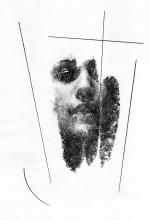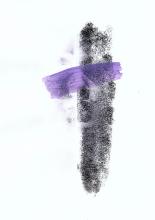Le foto(copie) di Samuele Piccoli
Trichloroethylene transfer
The Trichloroethylene fluid/trichloroethylene is much cheaper than acetone, but is also more toxic. It doesn’t leave any dominant colour tones on the final photo.
The photocopy (negative)
With the cleaning fluid/trichloroethylene process I was able to transfer both black and white and coloured photographs. On a sheet of paper of the same smoothness, respect to the classic method, the cleaning fluid/trichloroethylene process has the great advantage of transferring more details. Thus there aren’t serious limits on the characteristics of the image to copy.
The transfer paper (positivo)
The notable limit of this technique is that it is only possible to transfer images on paper of low weight. During the first brush stroke on the back of the negative, if the paper is too thick, the cleaning fluid/trichloroethylene does not successfully effect the positive.
As with the classic method, the same rule is valid: the smoother the paper, the more detail will be transferred to the final photo. The transfer is in fact based on the contact between negative and positive, and on the pressure applied with the cotton ball. A rougher paper, having more texture, is a significant obstacle to the correct contact between the paper and the relative transfer.
This significantly limits the post-production phase.
Fabiano Busdraghi: How do photo(copie)s perform, when it comes to the conservation of such images? Do you believe that the stability of an image in time is important or is an ephemeral and variable material even more interesting?
Samuele Piccoli: Technically, all that is needed is a simple protective spray for mixed means. However, I don’t want to use anything for a series of reasons: firstly because I’m curious and have no idea of how these images will evolve in time, and secondly I find it very instructive to have an object that, with its very own existence, reminds me that everything is transitory. In my office I have a photo printed years ago with fiber paper that, slowly, day after day, is getting darker, changing. A bit like all of us.
I find this all very beautiful.
Do you have any favourite online magazines or blogs regarding photography? Do you think that they could substitute the distribution of images in classic venues?
Samuele Piccoli: As I mentioned before, years ago I had a subscription to the National Geographic, but my taste now has changed and I’ve not renewed it. I like to read ‘Arte’, but this magazine is also converting (or it already has) to the religion of marketing, with more and more gallery artists and less technique and expressivity.
The internet is surely an important and fundamental resource, but I don’t think that it could substitute classic venues for the distribution of images, or at least it won’t until materials will still have a certain importance in the world of photography. I’m preparing an exposition of pinhole photographs printed on watercolour paper, uniting the evanescence-pinhole duality with the imperfections of the printing process. This makes the photos appear surreal, and seeing them on video would be pointless.
Fabiano Busdraghi: Tell me of a photographer whose work you enjoy, and why.
Samuele Piccoli: I deeply enjoy the work of Filippo Basetti, firstly because he is a delightful person, and also because he is a multitalented artist, open to all forms of expression, and he helped me a lot while I was seeking my own style.
Fabiano Busdraghi: Just a few curiosities on your personal tastes. What book are you currently reading? What kind of music do you listen to? What are your favourite films?
Samuele Piccoli: I’m reading Brida, by Paulo Coelho. Many might find it very mainstream, but I don’t care. Although the book that truly made me dream is “Siddharta” by Herman Hesse.
I enjoy listening to Lucio Battisti, Francesco De Gregori, Fabrizio De Andrè, and I’ve recently discovered Bandabardò. I’ve also discovered a passion for classical music.
Regarding films, it’s a tie between “Das Leben der Anderen” by Florian Henckel von Donnersmarck and “The man who wasn’t there” by the Coen brothers.







